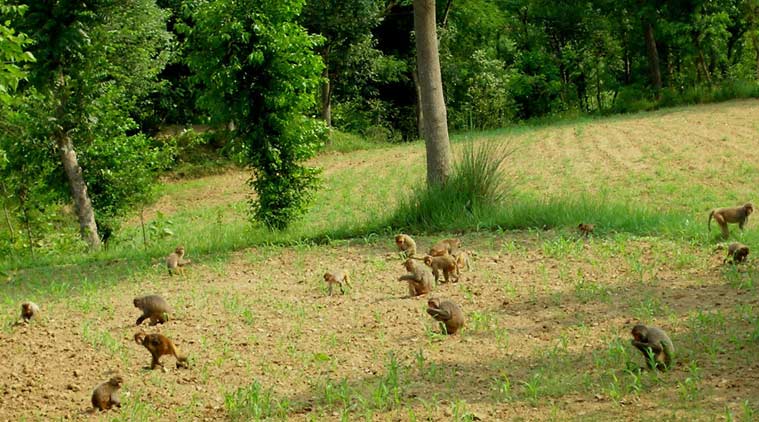An anathema to most welfare activists, removal is often the only solution for wildlife and people caught in acute, irreversible conflict
The Indian Express, 10 June 2016

The Indian Express, 10 June 2016

In pockets where conflict is acute, the immediate option is to reduce the number of too many habitual crop-raiders. (Source: Express archive)
Union minister Maneka Gandhi has raised her voice against culling of wild animals declared vermin. She can’t be faulted for lack of consistency. Her organisation has opposed and occasionally stalled similar moves by different state governments in the past. But the stand undermines both human rights and wildlife conservation.
Many believe that culling is unnecessary because we can prevent crop-raiding by adopting non-invasive measures. It’s a misconception. Fencing fields merely shifts conflict to the next accessible cropland. Used extensively, it creates an enclosure for wildlife. Even selection of crops that traditionally repelled animals does not seem to work any longer. Ask the farmers in Sirmour how monkeys raid their garlic fields that they avoided till recently.
Another popular misconception is that herbivores raid crops only because they have little to eat inside forests which they are losing to human encroachment. No doubt every wild patch needs protection but wildlife in fringe forests will always be attracted by the more nutritious fare available outside.
So we must create buffer zones so that crops do not stand at the edge of the forest, promote non-edible crops in such areas, offer prompt compensation etc to limit conflict. But these are mostly long-term measures and work in situations where crop damage is still reasonable. In pockets where conflict is acute, the immediate option is to reduce the number of too many habitual crop-raiders.
A huge rural population in India still nourishes a cultural bond with nature. It is because of them, and not so much the city conservationists, that a sizeable population of wildlife still survives. The outlandish demands of the fanatically righteous animal welfare lobby are fast destroying this last genuine constituency.
Wildlife are protected by law because they are too few and require protection. But when certain pockets see a population boom in herbivores, farmers cannot wait for predators to reoccupy such areas and do the population control for them. Besides, when we don’t allow lawful intervention, the farmers often retaliate by illegal means. Only, their hostility targets all wildlife species in an area and a further alienated forest department struggles without local support.
No killing is pretty. But when rampaging wild animals threaten lives and livelihoods and turn the villager against conservation, keeping their numbers in check is very much part of the big Nature picture.


No comments:
Post a Comment